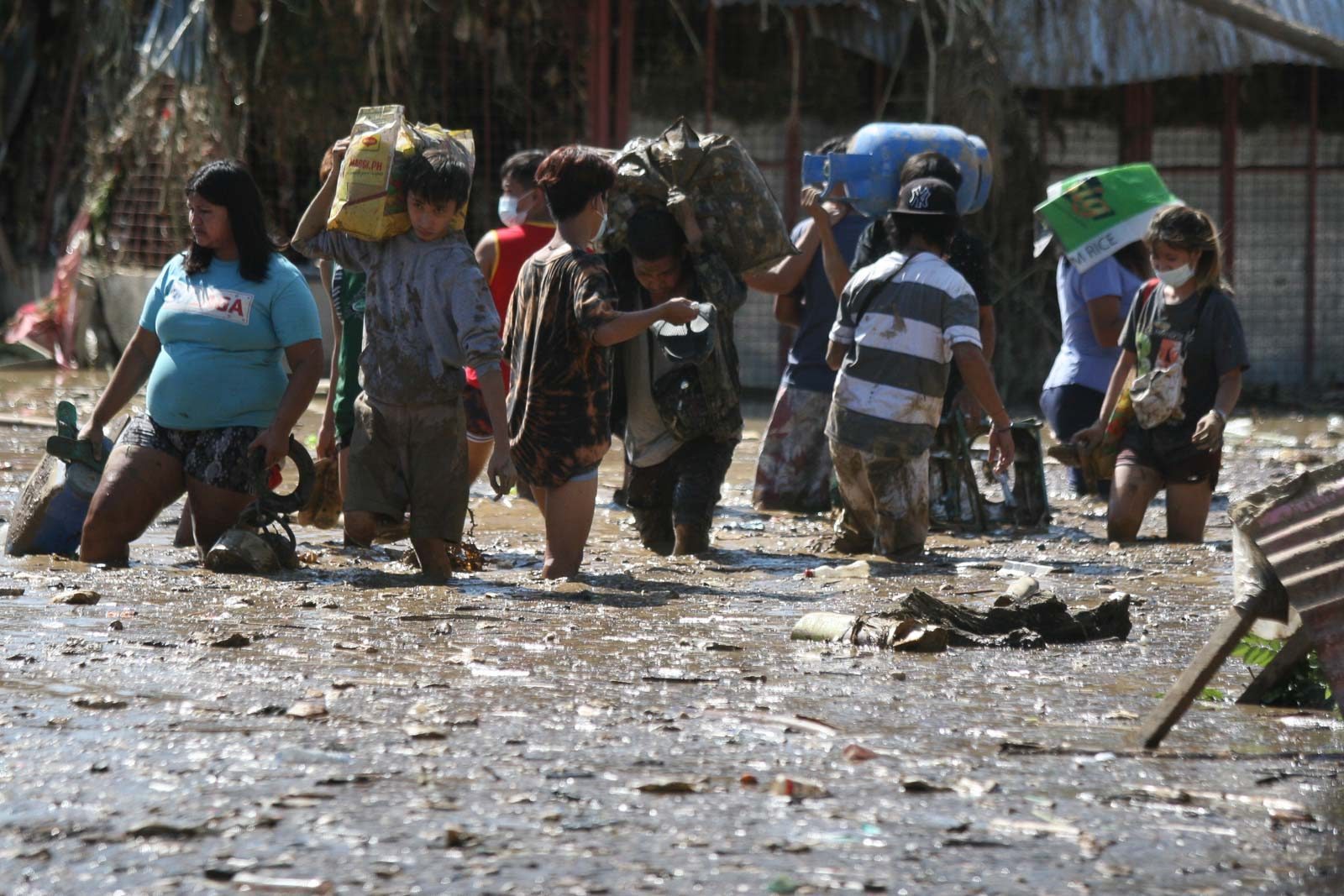SUMMARY
This is AI generated summarization, which may have errors. For context, always refer to the full article.

Public interest and advocacy network EcoWaste Coalition offered 15 eco-tips to assist flood-stricken households and communities affected by Typhoon Ulysses.
The advocacy group said in a press release on Saturday, November 14, that these tips can help lower the volume of trash, conserve resources, reduce expenses, and protect human health from hazardous chemicals and wastes – if properly observed.
“The post-disaster cleanup should not lead to the all-out disposal of flood-soaked materials as some of them can still be washed, dried, repaired, reused, recycled, or composted,” said Jove Benosa, zero-waste campaigner of the EcoWaste Coalition.
The advocacy group further stressed that families and communities should still be extra mindful of the health and safety measures in place to curb the spread of COVID-19 while following these steps:
- Put on protective gloves and boots or safety shoes as protection against animal bites, bruises, cuts, chemical burns, leptospirosis, and other flood-borne diseases.
- Segregate as much as possible post-disaster discards to set apart those that can be repaired, refurbished, reused, recycled, composted, or disposed of.
- Separate ordinary trash from special waste like busted fluorescent lamps, flood-soaked TVs, and other e-wastes laden with hazardous substances such as lead, mercury, and toxic flame retardant chemicals.
- Do not dump garbage in streets, storm drains, rivers, and vacant lots, nor engage in open burning to prevent further environmental degradation and pollution.
- Remove discards that can collect and hold water, which can serve as a breeding site for Aedes aegypti mosquitoes that can cause dengue fever.
- Make use of rainwater and greywater from the washing of clothes and dishes and from bathing to remove silt from flooding. Scrub it with soap and water and then rinse thoroughly.
- As much as possible, use non-toxic cleaning products such as vinegar, baking soda, and soap.
- Wipe glass windows clean using a moist newspaper that can be shredded after use for composting.
- Clean furniture and other stuff submerged in floodwater with hot soapy water. Rinse thoroughly and dry under the sun.
- Salvage, clean, fix, and reuse mud-soaked furnishings.
- Mix equal amounts of vinegar and water to disinfect things contaminated by floodwater.
- If using commercially sold disinfectant, carefully read the product label and follow the usage instructions.
- Do not mix chlorine-based products such as bleach with acids, ammonia, and other compounds, and always use alcohol and bleach in a well-ventilated area.
- Wash flood-drenched clothes and linens separately from uncontaminated ones.
- If needed, give damaged walls, appliances, furniture, and fixtures a fresh coat of duly certified lead-safe paint.
As of Friday morning, November 13, the official death toll from Typhoon Ulysses was 14. Department of the Interior and Local Government Secretary Eduardo Año said Typhoon Ulysses affected a total of 1,262 barangays, of which 1,006 saw flooding. – Rappler.com
Add a comment
How does this make you feel?

There are no comments yet. Add your comment to start the conversation.